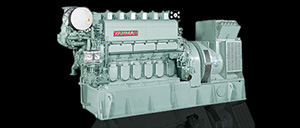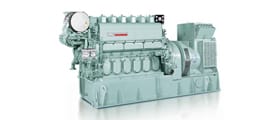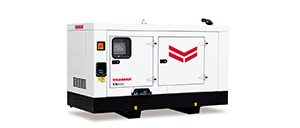Yanmar Green Farm in Ritto, Shiga prefecture is a venture of Yanmar Symbiosis, one member in the Yanmar Group. In May 2018, the farm’s lettuce hydroponic cultivation methods were awarded GLOBALG.A.P. certification, demonstrating they meet three international standards for Food Safety, Environmental Conservation, and Occupational Safety and Health. Yanmar became the first farm machinery maker in Japan to be so honored.
As the 2020 Summer Olympics and Paralympics in Tokyo approach, GLOBALG.A.P. is gaining attention as the setter of standards for food procurement for the games. Many people may still not be aware of GLOBALG.A.P., so here we take a look at what it does, what it recommends, and the advantages of G.A.P. certification for consumers, farmers and agricultural corporations.
G.A.P. For Agricultural Products Stresses Food Safety, Environmental Conservation, and Occupational Safety and Health
G.A.P. stands for Good Agricultural Practices, and “Good” refers to food safety, environmental conservation, and occupational safety and health. Farms that meet the good agricultural practice standards are awarded certification by a third-party certifying organization after undergoing inspections that check whether each standard is being met. There are a number of G.A.P. certification programs, including GLOBALG.A.P.
An enterprise has to pass through a number of steps before receiving GLOBALG.A.P. certification. (Its production methods will be inspected by a third-party organization, with a focus on the following five steps.)

(1) For each production stage (such as soil improvement, seeding, transplanting, growing, harvesting and shipping), examine problems, challenges and risks threatening food safety, environmental conservation, and occupational safety and health. (All farm members participate in brainstorming sessions.)
(2) Draw up rules and checklists to resolve and avoid the risks identified in Step (1).
(3) Ensure that farming practices follow the rules drawn up in Step (2), and leave a record.
(4) Conduct inspections to check rule compliance, and identify issues requiring improvement.
(5) Change practices when necessary, and make improvements to be implemented the following year.
| Production Stages | Place | Food Safety | Environmental Conservation | Occupational Safety and Health | |||
|---|---|---|---|---|---|---|---|
| Risk | Countermeasures | Risk | Countermeasures | Risk | Countermeasures | ||
| Soil improvement | Field A | Are the compost and fertilizer quality assured? | Check information detailing the production method and ingredients. | Would fertilizer runoff pollute the environment? | (1) Periodically check areas around the field. (2) Check the weather and wind direction during fieldwork. |
Is farming machinery being used safely? | (1) Offer farmhands regular training in the safe use of farm machinery. (2) Draw up a safety checklist and verify safety each time farm machinery is used. |
| Seeding | Greenhouse B | Are the seeds stringently verified and certified to be non-genetically modified? | Obtain seed certificates from the seed supplier and verify what is written. | – | – | – | – |
| Pest control | Pesticides, storage sheds and Field A | Are checks being made to verify that pest control measures abide by the proper amounts and frequencies? | Those responsible have a proper understanding of farming practices, draw up pest control plans, verify them and put them into practice. | Do pest control and integrated pest management (IPM) have only a small ecological footprint? | Use insect catching devices and the like to reduce agricultural pests, ensuring their effectiveness and checking them periodically. | Is farmhand health protected during pesticide application? | Ensure that clothing (or protective clothing) is suitable for the job at hand is worn. |
| Harvesting | Field A | – | – | Are steps being taken to reduce crop loss and residue? | Draw up a manual detailing control and transportation methods to avoid harm to crops. | – | – |
〈Example for reference purposes〉 (1) Sample problems, challenges and risks identified for each production stage.
| Production Stages | Place | Food Safety | Environmental Conservation | Occupational Safety and Health | |||
|---|---|---|---|---|---|---|---|
| Risk | Countermeasures | Risk | Countermeasures | Risk | Countermeasures | ||
| Soil improvement | Field A | Are the compost and fertilizer quality assured? | Check information detailing the production method and ingredients. | Would fertilizer runoff pollute the environment? | (1) Periodically check areas around the field. (2) Check the weather and wind direction during fieldwork. |
Is farming machinery being used safely? | (1) Offer farmhands regular training in the safe use of farm machinery. (2) Draw up a safety checklist and verify safety each time farm machinery is used. |
| Seeding | Greenhouse B | Are the seeds stringently verified and certified to be non-genetically modified? | Obtain seed certificates from the seed supplier and verify what is written. | – | – | – | – |
| Pest control | Pesticides, storage sheds and Field A | Are checks being made to verify that pest control measures abide by the proper amounts and frequencies? | Those responsible have a proper understanding of farming practices, draw up pest control plans, verify them and put them into practice. | Do pest control and integrated pest management (IPM) have only a small ecological footprint? | Use insect catching devices and the like to reduce agricultural pests, ensuring their effectiveness and checking them periodically. | Is farmhand health protected during pesticide application? | Ensure that clothing (or protective clothing) is suitable for the job at hand is worn. |
| Harvesting | Field A | – | – | Are steps being taken to reduce crop loss and residue? | Draw up a manual detailing control and transportation methods to avoid harm to crops. | – | – |
〈Example for reference purposes〉 (2) Sample rules and checklist for resolving and avoiding risks identified
As you can see, G.A.P. methods bring farming practices into the forefront, and this is important because they promote improvements that will lead to better farm management.
The GLOBALG.A.P. certificate provides international recognition of “Good Agricultural Practices”.

G.A.P certification is also provided by other associations, such as the Japan GAP Foundation and ASIAGAP.
The hydroponic cultivation of lettuce at Yanmar Green Farm received certification from the GLOBALG.A.P. farm assurance program, which has become the de facto international standard in more than 120 countries. The program’s headquarters are located at the non-profit organization FoodPLUS GmbH in Germany. Meeting the standards opens the door for suppliers to provide food products for the 2020 Olympics and Paralympics in Tokyo, and in Japan pressure is mounting for major food distribution chains and food processors to obtain G.A.P. certification. It is possible that in the future efforts to obtain G.A.P. certification will be required, and getting ready at an early stage places a company a step up, leading to greater international competitiveness.
When Safety Becomes Apparent, Reliability and Transparency Are Assured
The program requires checklists, records for day-to-day farm operations, and documentation, all in addition to regular farm work, so many farmers and agricultural corporations may hesitate after learning about the desk work required to achieve certification, and then the extra responsibility of following G.A.P. guidelines. So it’s worth looking now at two of the major advantages G.A.P. certification, especially GLOBALG.A.P., offers.
First of all, certification clearly indicates that a trustworthy third-party organization has inspected and given approval to the producer’s efforts to ensure food safety, environmental conservation, and occupational safety and health. This is something we consumers cannot do on our own. So safety is readily apparent for consumers, grocery stores and others to see, demonstrating a reliability and transparency that producers who are not certified don’t have.

Right: All lettuce is identified with a panel number, to ensure food traceability. Information such as when the seeds were sown and when the plants were transplanted on the panel is readily available.
Traceability gives consumers …confidence in the food they eat
In addition, each step in the production process is documented, leaving an accurate record. This is traceability. It makes it possible to quickly identify the source of a problem, in the unlikely event something goes wrong. Traceability gives consumers and food-related businesses confidence in the food they eat and handle.
When you compile a checklist, you are establishing farm work guidelines.

Now we’ll look at the advantage that occurs when a food production system inspired by G.A.P. becomes transparent.
One significant factor is the establishment of rules for each individual farm. This is done when the checklists are compiled. Everyone involved in the production engages in brainstorming sessions to identify risks and problems. These are listed, countermeasures are discussed, and rules are made, all based on G.A.P. guidelines. Everyone understands and follows the rules while working, and records their efforts.
Work on a farm is often guided by information that lies within the workers’ heads, information they gained from many years of experience. Intuition often plays a role too. But the G.A.P. process requires documentation, plus records. These can become a manual, and continual record-keeping will improve production methods and farm management.
Everyone follows checklist guidelines, leading to better awareness. For example, “Wash your hands” is one rule to follow before beginning work. After work, tools are returned to their proper place. Each task is reviewed, rules set out parameters, and the result is a lower risk of injury and contamination.
This summary has shown you some of the advantages of the Good Agricultural Practices program. Our next issue will look at what Yanmar Symbiosis had to do to achieve certification, and some of the improvements it has made.

 Agriculture
Agriculture
 Recreational Marine
Recreational Marine
 Recreational Boat
Recreational Boat
 Premium Cruiser
Premium Cruiser
 Marine Equipment
Marine Equipment
 Marine Commercial
Marine Commercial
 Propulsion Engines (High Speed)
Propulsion Engines (High Speed)
 Propulsion Engines (Medium Speed)
Propulsion Engines (Medium Speed)
 Auxiliary Engines
Auxiliary Engines
 SCR System
SCR System
 Dual Fuel Engine
Dual Fuel Engine
 Two-stage Turbocharging System
Two-stage Turbocharging System
 Electric Propulsion System
Electric Propulsion System
 Energy Systems
Energy Systems
 Construction
Construction
 Industrial Engine
Industrial Engine
 Large Generators
Large Generators
 Power Products
Power Products






















